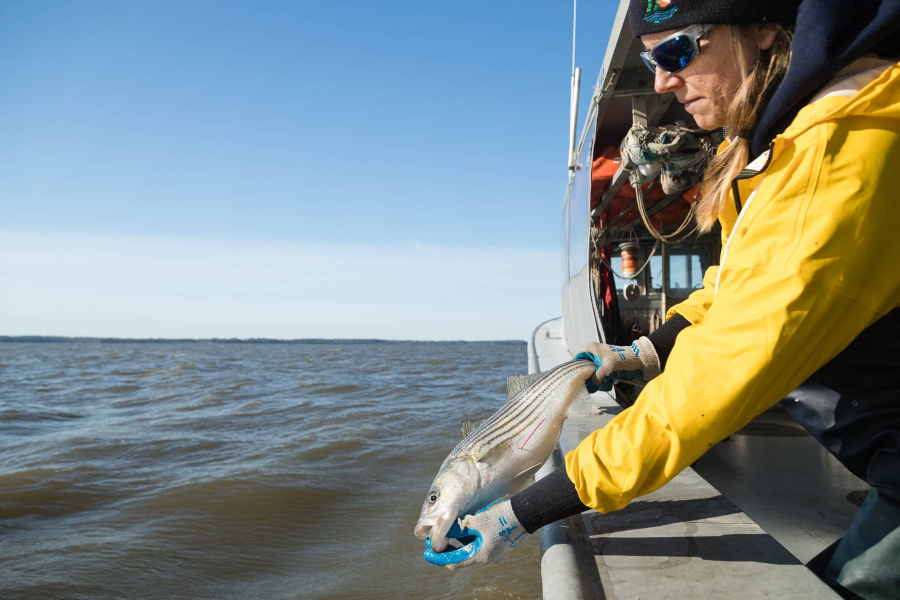Juvenile striped bass numbers low in both Maryland and Virginia
Habitat pressure is impeding reproduction for the Bay’s signature fish

The recovery of striped bass in the 1990s has been heralded as a conservation win for the Chesapeake Bay. Following a concerning decline in the fish’s population, fishery managers put a pause on striped bass commercial and recreational fishing in Maryland from 1985 to 1989, and in Virginia for one year in 1989. Striped bass numbers rebounded through the 1990s and the management decision was considered a success.
But today, the iconic species is in trouble once again. Biologists from the Maryland Department of Natural Resources (DNR) and Virginia Institute of Marine Science (VIMS) conduct annual surveys for juvenile striped bass in the estuary. And in 2024 both organizations agencies found the population of juveniles to be far below the long-term average. This is the second consecutive year in Virginia where numbers have been below average and the sixth consecutive year in Maryland.
Striped bass spawn in the Bay’s tidal tributaries and then migrate down into the Bay, with some of them continuing on to the ocean. Many striped bass will live in the estuary their entire lives and are one of the Bay’s signature species. Anglers love to fish for striped bass (also known as rockfish) because they are big and put up a fight.
One of the reasons for a decline in juvenile striped bass is the rise in average water temperature during winter. Striped bass larvae are highly vulnerable in the first few weeks after hatching and cannot survive in water that’s too warm for the season or if there’s not enough food available. Other species with similar spawning behavior to striped bass such as white perch, yellow perch, and American shad also experienced below-average reproduction in 2024, according to Maryland DNR.
Scientists have also seen a decrease in the quality of near-shore habitat that juvenile striped bass rely on. A new study from researchers at VIMS and William & Mary looked at water quality data for 10 major spawning areas between 1996 and 2017, and found approximately half of the spawning areas degraded in that time frame. Near shore habitats are important for many fish species but they are the first to experience the effects of nutrient runoff and land development.
With the concerning decline in juvenile striped bass, fishery managers in the Chesapeake Bay are focused on protecting adult striped bass so that these fish can produce a strong class of juveniles when environmental conditions are favorable. In January, the Atlantic States Marine Fisheries Commission issued new fishery regulations to help reduce adult striped bass mortality, including limits on the size and number of fish that can be harvested. The board will meet in December 2024 to review results of a striped bass stock assessment from across the Atlantic coast and determine if further regulation is needed.

Comments
The fish need to complete their life cycle. Start to finish,if we don't allow this the ecosystem will die and everything connected.
Thank you!
Your comment has been received. Before it can be published, the comment will be reviewed by our team to ensure it adheres with our rules of engagement.
Back to recent stories